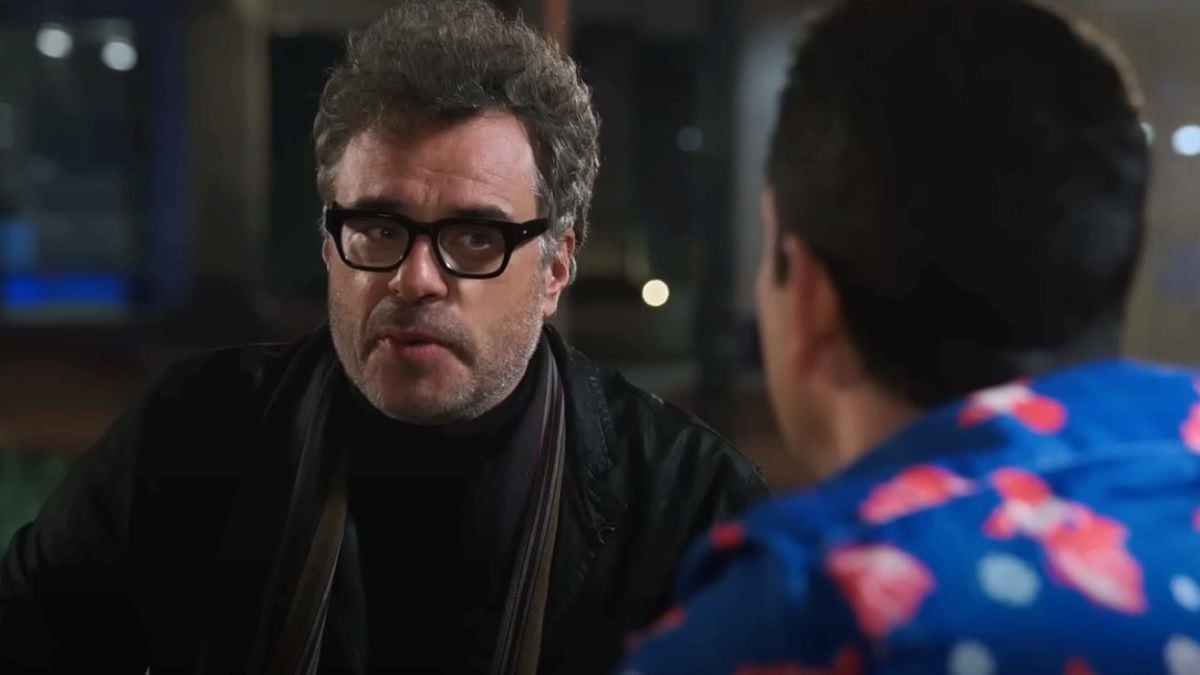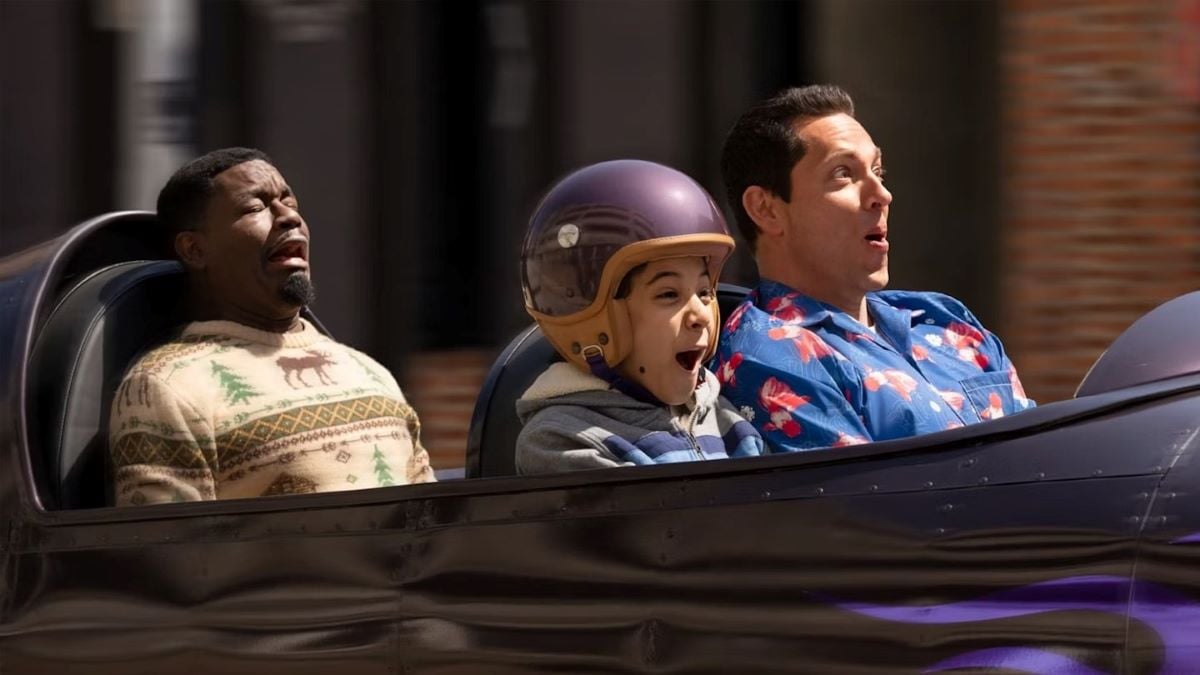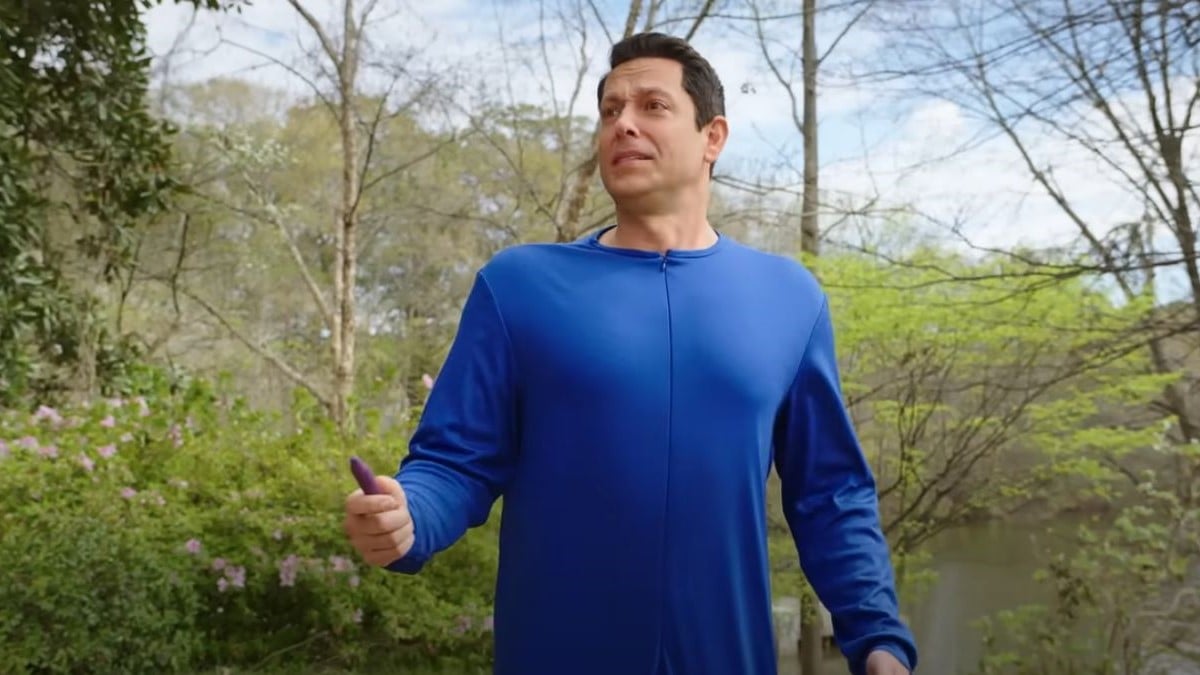Let’s get something straight here; Harold and the Purple Crayon is a children’s film for children based on a book written specifically for children. What does that mean, exactly?
Well, if you’re the brain trust behind this latest feature from Sony Pictures (who has, in 2024 alone, coughed up the likes of Madame Web, Ghostbusters: Frozen Empire, and Tarot), it means that you have the green light to churn out insultingly poor material and call it a day, all whilst likely believing that you’re absolved of most criticism because, again, this is a children’s film. It’s not like anyone was expecting top-shelf writing or acting in the first place, so why not save any real effort for a more serious project (that you will, of course, most certainly, definitely be considered for after working on Harold and the Purple Crayon)?
What it actually means, though, is that Harold and the Purple Crayon is a children’s film, and children are people; people who, perhaps more than anybody, can benefit from nutritious storytelling. It’s a shame, then that director Carlos Saldanha, screenwriters David Guion and Michael Handelman, and all the bland suits that had their fingers in this project throughout, decided that it’s okay for children’s media to be utterly thoughtless junk.
The film stars Zachary Levi as Harold, the eponymous little boy from Crockett Johnson’s 1955 book of the same name, except now he’s a fully grown adult whose curiosity sends him into the real world in search of Johnson (who Harold only knows as a disembodied voice of an old man, that voice being Alfred Molina’s). Armed with his magic crayon that can bring any of his drawings to life, Harold gets involved in some rollicking hijinks, makes some friends along the way, and tries to adapt to life in the real world.

What’s there to say? Harold and the Purple Crayon is unimaginative slop, full stop. There is no story here; there’s no plot, there are no emotions, and dialogue is completely outlawed unless it’s paired with a hefty dose of stupid. The whole movie is just Zachary Levi, Lil Rel Howery, Zooey Deschanel, and others aimlessly clowning about in Atlanta with a bunch of purple special effects for some reason. There is not a doubt in my mind that Harold and the Purple Crayon was an absolute blast to film, but no one gave this crew a $40 million budget to enjoy themselves; they gave them that budget, allegedly, to make a movie.
And it’s a resolutely poor movie; even if one takes the critical weight off the non-existent technical aspects, the bulk of the film’s premises alone leave a sour taste in one’s mouth. Harold and the Purple Crayon may proclaim to have a message about believing in oneself and the value of imagination, but without any semblance of a structural backbone whatsoever, those ideas don’t even wind up as quarter-baked in the context of the film. And so, Harold and the Purple Crayon is left with nothing but those aforementioned premises, which are constantly at odds with one another.
For instance, Harold’s friendship with the child Mel is awkward and dissonant, and Jermaine Clement’s antagonist Gary (pictured above) is written as a creepy, self-proclaimed suitor of Mel’s mother Terri (Deschanel); in this way, the film is both using the antagonist’s creepiness to further antagonize him, all whilst showing a severe lack of self-awareness for its own creepiness. Elsewhere, Harold, Moose (Howery), and Porcupine (Tanya Reynolds, who probably had the most fun of all) all seem to tighten and loosen their grasp on Earth’s social conventions at completely random intervals, and the whole film just generally loans itself to an air of mercurial immaturity that it has no interest in taking responsibility for.
Now, indifferent proponents of Harold and the Purple Crayon may suggest that young kids will enjoy the film, and that’s really all that should matter. On that first point, they would be mostly right; there are airplanes and pet dragons and action sequences and a poop joke and a grown man acting goofy all the time; kids love that, right?
Sure, and kids also like lots and lots of sugar, and if you allow children to make their own consumption decisions, then they will eat lots and lots of sugar and get very sick. This is also why children don’t make $40 million feature films.
We adults, then, are tasked with providing children with nutritious entertainment that actually cares about their imaginations and general well-being rather than just pretending to do so. Adults who understand this make movies like Inside Out 2 and Orion and the Dark; they do not make movies like Harold and the Purple Crayon.

So why isn’t Harold and the Purple Crayon a complete failure? What’s up with that extra half-star on the rating there? There are two reasons for this.
The first is that right around the time that Harold and Gary face off for the final battle, the film takes a hard, if brief, left turn into complete and utter parody territory. It’s as if, for one measly moment, the Fast & Furious team had a screenwriting intern lurking in the shadows of Harold and the Purple Crayon‘s set as a sleeper agent, and they activated them just long enough to get that one scene written before Sony got them under control. It’s a sort of so-bad-it’s-good, guilty pleasure moment that makes you wonder if the whole film could have been something like that. And the thing is, it would have been an unthinkably strong upgrade from the movie we got, but it still would have been far from the best version of itself.
That brings me to the second point; Harold and the Purple Crayon, if only exclusively in the abstract, sets a precedent for how the core identity of a children’s book might — in the event of being brought to life in the form of a character or avatar — engage and interact with the real world in all of its complications. How much creative mileage can you get out of a character’s excitement about excessively bold advertising promises (“Wow! You can learn anything you want in a library?!” “Wow! Wal-Mart has everything?!”), and the emotional fallout when they realize the truth? A more responsible group of creatives might have considered these possibilities, if only for the sheer fact that children’s media deserves as much creative and consumptive respect as the next Oscars darling.
Unfortunately, Harold and the Purple Crayon missed that memo, and will instead likely go down as a summer laughingstock, the film that caused Levi to get a new agent, and a prime example of everything you shouldn’t do when making a movie, regardless of whether or not it’s for children.

